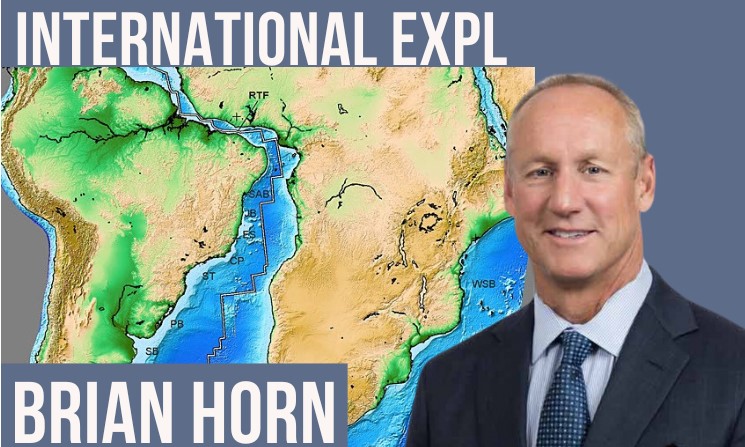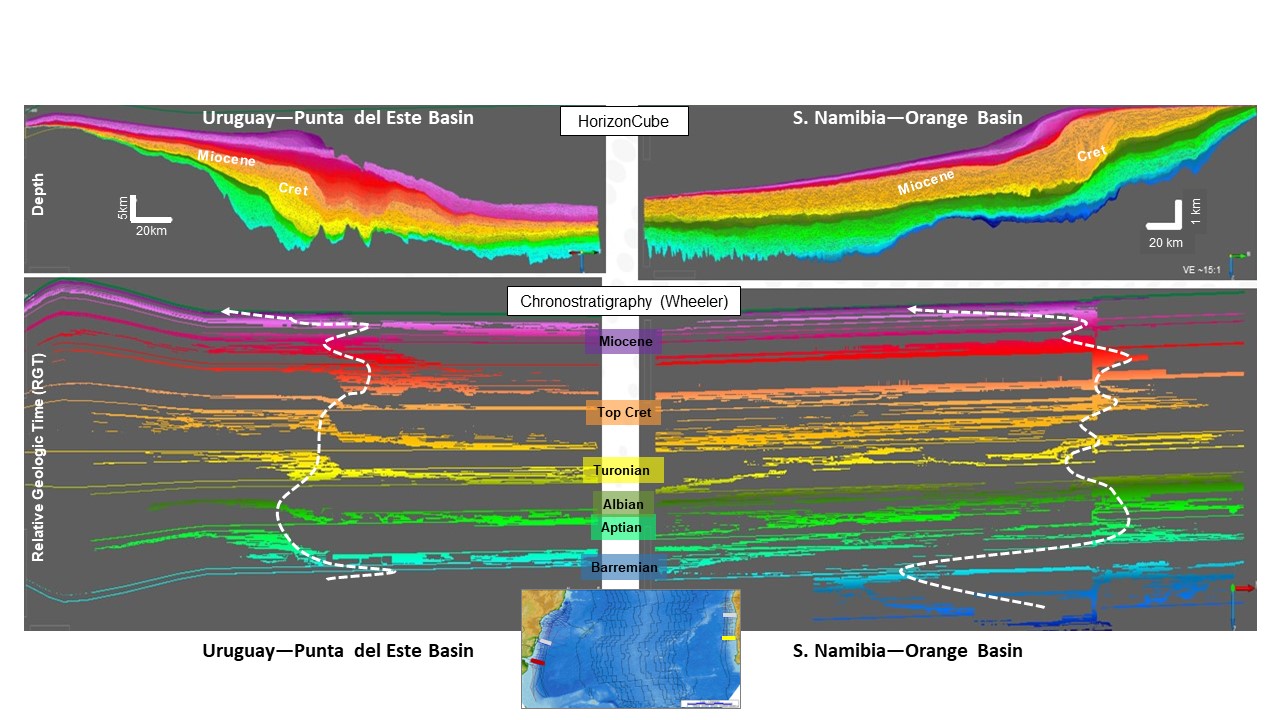International Exploration of Namibia-Uruguay
In order to register, please click login to either sign in to an existing account or create a user profile. Go to the HGS home page and login with your user name and password and then return to this page in order to register as a member or guest of a member. For help registering contact the HGS office or email webmaster@hgs.org. Thank you!
Monday, December 11
ROOM • Norris Conference Center • 816 Town and Country Blvd
Site Map • Floor Plan
Social Hour 5:30–6:30 pm
Dinner 6:30–7:30 pm, Presentation 7:30- 9:00 pm
Member/Emeritus/ Honorary Life- $65.00 Student- $65.00.
Non-Member and Walkups $75.
To guarantee a seat, you must pre-register on the HGS website and pay with a credit card. You may walk up and pay at the door if extra seats are available. Please cancel by phone or email within 24 hours before the event for a refund. Online & pre-registration closes Monday, December 11 at 5:00 a.m.
HGS December International Explorationists
Dinner Meeting
Speaker: Brian Horn, Hatteras Energy Group
Comparison of Stratigraphic Architecture Across Conjugate Margins - Identifying Reservoir Presence and Architecture Uruguay, SA, and Namibia, Africa

Extensive offshore areas of the South Atlantic and East African continental margins remain underexplored, despite recent hydrocarbon discoveries. Giant discoveries on these margins attest to functioning petroleum systems with both shallow marine and deep-water siliciclastic reservoirs. Exploration wells have identified the presence of Early and Late Cretaceous petroleum systems. Source-reservoir couplets on both margins provide insight into petroleum habitats of the conjugate margin in addition to large deep-water fan systems. This presentation reviews the stratigraphic evolution of conjugate continental margins in the South Atlantic and the potential for predicting reservoir presence and geometry using 2D seismic data. This technique also demonstrates the potential for identifying the temporal and spatial distribution of deep-water fans, their geometries, and architecture in the Rovuma basin.
Detailed chronostratigraphic interpretations (HorizonCubes) in dGB OpendTect across four seismic profiles offshore Brazil, Uruguay, and the conjugate margin of northern and southern Namibia are shown. HorizonCubes depict high-resolution stratal architecture and the evolution of the post-rift sequences as the South Atlantic margins drifted apart. This analysis highlights similarities and differences of the margins demonstrating variation in petroleum systems and identifies other potential hydrocarbon fairways. The variation and stratigraphic architecture across conjugate margins and the divergence of evolution of depositional systems with increasing separation of the continents and changes in sediment supply is highlighted.

On the Uruguayan margin, two-phase shelf margin aggradation in the Turonian gave rise to shelf reservoir buildups and slope-failure-related deep-water reservoirs, with intervening condensed source rocks. The contemporaneous Namibian margin experienced similar two-phase aggradation with steeper shelf profiles giving rise to more persistent lowstand development in deep water. The synchronous low stand at the K-T boundary suggests a simultaneous large-scale (global) regression across both margins. With increasing cycle diachroneity, high-resolution T-R cycles on the lower-gradient Namibian shelf demonstrate the influence of tectonism and sediment supply on individual continental margins.
With the depositional framework outlined it is possible to analyze and predict the geometries and presence of deepwater channel and fan systems. Examples from offshore Tanzania demonstrate the identification of depositional fairways and geometries by placing their evolution in a time-space framework. This approach can be used in exploration access to identify high-graded areas for reservoir presence. These comparisons reveal that variation in stratigraphic architecture enables the prediction of reservoir/trap configurations. Using this technique and an understanding of the stratigraphic framework creates a conjugate margin-scale interpretation of depositional history and petroleum systems.
About the Speaker
Brian Horn was most recently Technical Head of Exploration Portfolio and Assurance at Cairn Oil and Gas in Delhi, India. Prior to joining Cairn, he was the Senior Vice President and Chief Geologist of ION E&P Advisors. He received his Ph.D. in Geology and Geological Engineering from the Colorado School of Mines and his MSc and BA degrees in Geology from the University of Colorado, Boulder. Brian has worked in oil and gas exploration and production for over 25 years. Brian served as HGS Bulletin Editor and is a long-time member of the HGS.
His experience includes technical and commercial advisory, regional exploration, basin and play fairway analysis, petroleum systems, regional stratigraphic and seismic correlations as well as resource assessments globally. He has directed New Ventures exploration teams conducting new opportunity evaluations, regional portfolio development, and technical and commercial analysis delivering projects that identify uncertainty and are focused on returning value.

Instructions to Norris Conf. Center:
The Norris Conference Center is on the Second (2nd) Floor, and cannot be seen from the street. From Town and Country Blvd, turn west at Plaza Way to STOP sign. Turn right = North and go to Level 3 of the parking structure. The Norris Parking Garage is next to the Moran Hotel. The parking structure can also be reached from the northbound Beltway 8 frontage road. Turn into the driveway that is 0.33 mi. north of Kimberley Ln., just before the Amegy Bank sign
816 Town & Country Blvd., Suite 210
Houston, TX 77024
United States
| OLD Meetings 2022-2023 | |
| HGS Member | $ 65.00 |
| Non-Member | $ 75.00 |
| Student | $ 65.00 |
|
Event Attachments
|
|
Event Contact
|
|
Committee
|
|
Event Filter Informations
|


